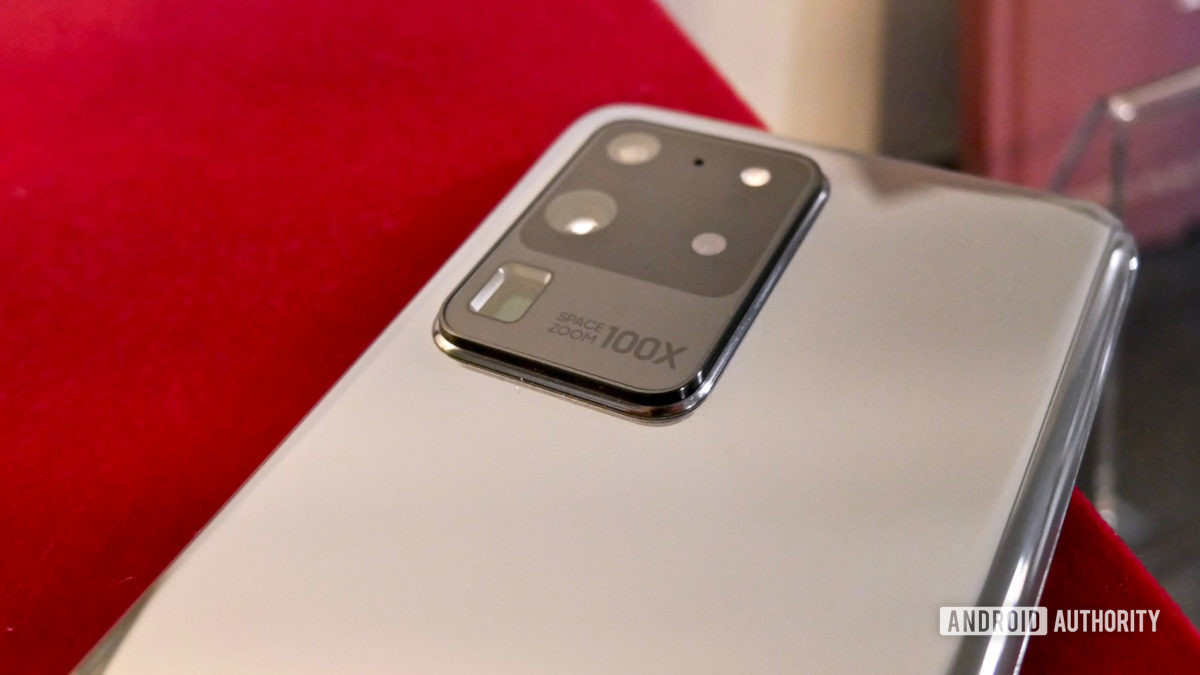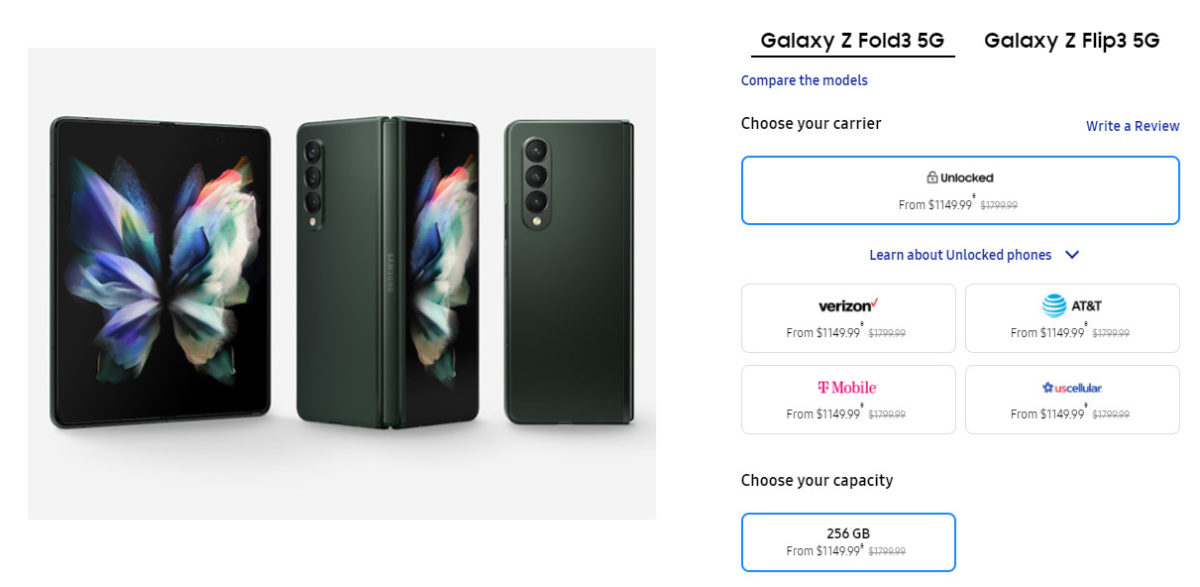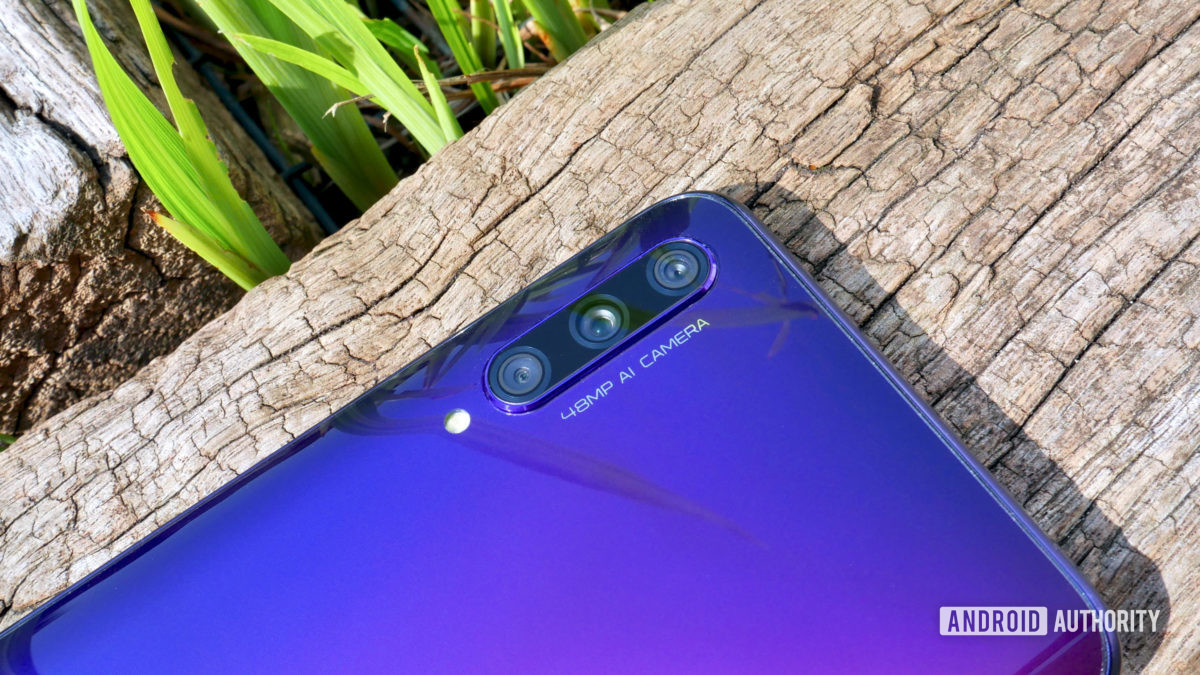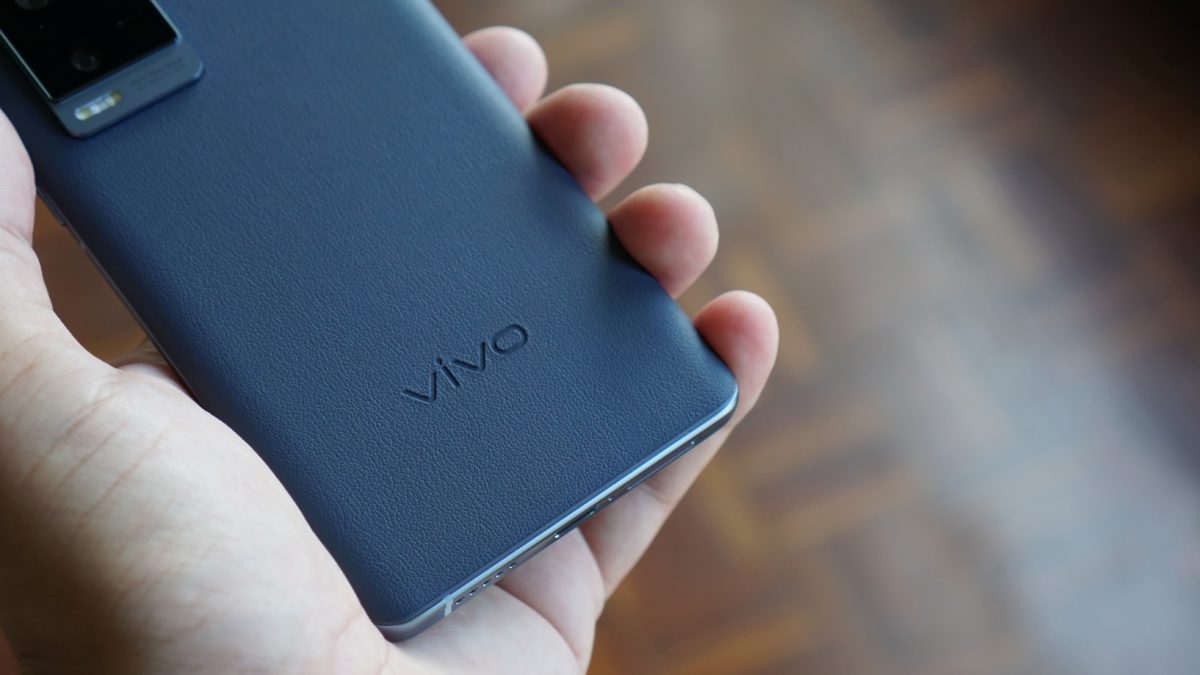
Smartphone manufacturers aren’t strangers to sly marketing tricks, as they aim to draw attention to their products and garner more sales in the process. Some of the more prominent tactics we’ve covered before include photo fakery, benchmark cheating, and misleading renders.
These aren’t the only examples of sketchy marketing we’ve seen before though, and here are seven more eyebrow-raising smartphone marketing tactics we’ve encountered in years gone by. You can check out our previous list of shady smartphone marketing tricks at the link.
1. Focusing on trade-in pricing

There’s nothing inherently wrong with listing trade-in pricing — smartphone brands knock the price off a new device if you trade in your old phone all the time. But the problem arises when companies like Samsung automatically list trade-in pricing as the default option when you visit their online stores, complete with the RRP crossed out to give the impression of a more traditional cash saving. Check out the screenshot above to see what we mean.
This feels pretty gross, as brands try to make their phones look like they come with a conventional cash discount. It would be much better if both trade-in and full pricing were listed, or if companies actually labeled the trade-in price as such in the same area for immediate clarity.
Another marketing trick we see is for companies to offer promo pricing and then make the proper price less prominent or hidden altogether in marketing/press materials. Again, there’s nothing wrong with promo pricing itself, but companies could be more transparent about actual pricing.
2. Advertising models you can’t buy
Another thing we’ve seen is companies advertising smartphone models that you can’t actually buy. The most prominent example we’ve seen in 2021 is OnePlus advertising the 128GB OnePlus 9 Pro for $969 in North America.
Unfortunately, the company delayed and then canceled the release of this variant, blaming chipset supply issues. This meant users had to spend $1,069 for the 256GB OnePlus 9 Pro option, resulting in a $100 price hike. OnePlus also did the same for the Nord 2 in India, announcing a 6GB/128GB variant for the market but only actually offering an 8GB/128GB variant or higher.
We do have some sympathy if chip shortage issues are indeed the cause, but it’s still a disappointing turn of events. After all, OEMs gain good PR for announcing a low base price, but what’s the point when you can’t actually buy a device at that price to begin with?
3. Focusing on pointless metrics
Another marketing trick used by smartphone brands is to focus on useless metrics in order to stand out from the pack. For example, 2020 saw Samsung step up in this regard by offering 100x “Space Zoom” on its Galaxy S20 Ultra.
Of course, the reality was that image quality at this zoom level was awful. In fact, we thought that picture quality was pretty bad from 30X onwards in our review. It was clear that Samsung focused on the 100x branding for marketing purposes rather than doing so because it was legitimately good or even okay.
Related: Camera zoom explained — how optical, digital, and hybrid zoom work
Samsung isn’t the only phone manufacturer to offer ridiculous but low-quality zoom levels, as we’ve seen the likes of Xiaomi up the ante with 120x digital zoom on the Mi 10 Ultra. Again, this is a nigh-on useless feature that feels like it was tacked on so the firm could say it beat Samsung (and for the marketing synergy with a 120Hz screen and 120W charging).
We’ve also seen companies like Oppo and Xiaomi focus on features like 120W or 100W charging speeds. This isn’t entirely pointless, as you’re indeed getting the ability to top up in less than 20 minutes in some cases. But these speeds often result in a much higher rate of battery degradation. Even 50W to 65W charging still delivers super-fast top-up times without putting as much strain on the battery over time.
4. Qualifying statements for bests and firsts
A tactic that has been around for years has been the tendency for companies to claim qualified firsts/bests. That is, the brand claims a very specific first or best for marketing purposes.
Sony was one of the most prominent proponents of this tactic in bygone years, as it claimed that the Xperia Z2 had “the world’s best camera and camcorder in a waterproof smartphone.” On the one hand, water-resistant phones weren’t common at the time, but it still felt like the company was clawing for a “world’s best” title.
Check out: Android Authority‘s big book of (almost) every smartphone first!
We also see some brands tout qualified firsts, like Realme boasting of the first phone in India with a specific budget SoC. Again, Realme might not be the first to actually offer a phone with this chipset globally, but the desire for a company to say they’re first to do something — even if it doesn’t mean much in a wider context — does get old.
5. AI everywhere

One of the more annoying marketing practices these days is to add “AI” to the name of every feature. Many manufacturers are guilty of this behavior, covering everything from hardware features to software capabilities.
We’ve seen several brands do this for their “AI camera” modes, which essentially boils down to smarter scene and object recognition. Sure, machine learning is used here, but scene recognition has been around for years anyway. Still, that doesn’t stop companies from offering “AI” modes or “AI camera” branding.
We’ve seen many brands add AI to the name of features with very evidence of any AI smarts at play.
We’ve also seen companies like Asus offer “AI charging” which adjusts a phone’s charging rate based on previous charging habits. Meanwhile, other phone brands simply call it smart charging or optimized battery charging. The company arguably reached its “peak” in this regard with 2018’s Zenfone 5Z. That phone offered AI charging, AI Boost (a type of performance feature), AI Scene (scene recognition), AI Ringtone (adjusting ringtone volume based on ambient noise), and AI Photo Learning (suggested edits). Sigh.
The likes of Oppo, Vivo, Xiaomi, LG, and others also tout features like “AI face unlock” and “AI portrait” modes when they actually just mean they’re using software algorithms. Perhaps the thinking is that slapping “AI” on the name will make people forget that these aren’t hardware-driven features (like 3D face unlock).
6. Fudging the performance numbers
We previously covered benchmark cheating in our first rundown of questionable smartphone marketing tricks, but this entry focuses on performance issues of a different kind. More specifically, we’ve seen some companies offer cutting-edge silicon in their flagship phones but throttle these devices aggressively for battery life.
The most prominent example of this in 2021 was OnePlus and the OnePlus 9 series, after it emerged that it was throttling a variety of popular apps. OnePlus went so far as to only use the Snapdragon 888’s little CPU cores for the likes of Google Chrome.
Related: Hey OnePlus, it was never about the crime, it was about the cover-up
Probably the biggest example of all time was Apple’s Batterygate, which saw the iPhone maker quietly throttling older iPhones with degraded batteries. In this way, the company could eke out better endurance on phones with older batteries.
Again, there’s nothing wrong with this in principle, especially when you don’t notice any performance-related problems. But the issue is that these companies aren’t always transparent about this approach, which essentially bars consumers from using all the power at their disposal. The OnePlus case was particularly interesting, as you might ask what’s the point of buying a brand-new, powerful phone when the heavy-lifting CPU cores aren’t even being used in many apps.
7. Update commitments as marketing props

Outside of Google, Samsung is the king of updates on Android right now, offering four years of security patches and three years of OS updates. The commitment applies to flagships released from 2019 onwards, foldable devices, tablets, and even the last two generations of select Galaxy A-series models (e.g. Galaxy A51 onwards, Galaxy A71 and higher, Galaxy A90 onwards).
There’s no doubt that Samsung is reaping the marketing benefits of this move, and several other manufacturers have announced revised update policies too. Unfortunately, there are brands like Oppo, Vivo, and even OnePlus are all falling short of Samsung in terms of their implementations — so much so that they feel a little like a cheap PR move.
In Oppo’s case, the Find X3 series will gain three years of OS updates, but last year’s Find X2 range or any mid-range devices will miss out. Meanwhile, Vivo revealed that the upcoming X70 series would gain three years of OS upgrades, but the X60 family launched earlier this year or its mid-range offerings wouldn’t be so lucky. OnePlus — traditionally a leader on software promises — recently went on record that the OnePlus 8 series and higher will gain three years of OS updates and four years of security patches, but the same doesn’t apply to its Nord series and other budget phones.
As disappointing as it is, we can understand to an extent why brands would restrict three OS updates to flagship phones given the cost of these devices. On the other hand, it’s tough to see Oppo’s and Vivo’s approaches as anything other than a way to score easy praise for their upcoming releases while neglecting their less-than-year-old flagships.
That’s it for our look at seven more questionable marketing tricks from smartphone manufacturers. Are there any more you’d add to the list? Let us know below.